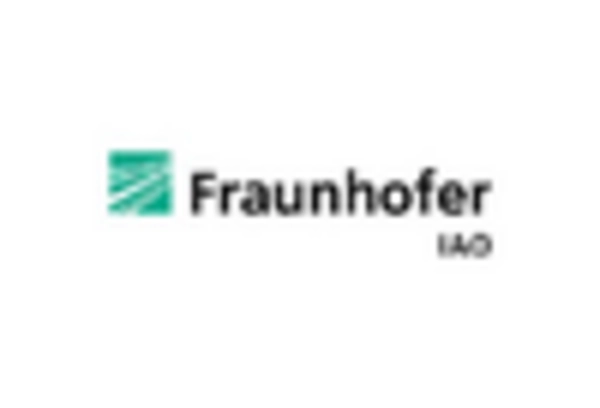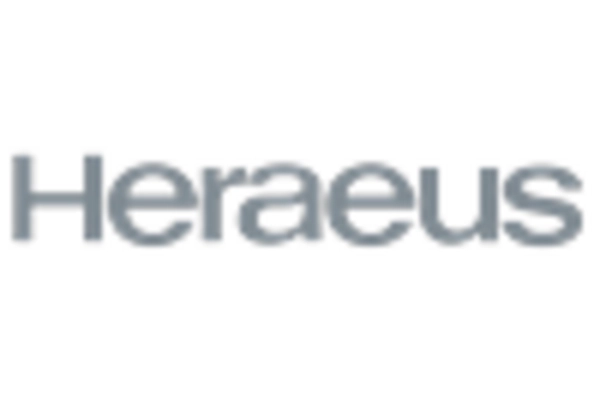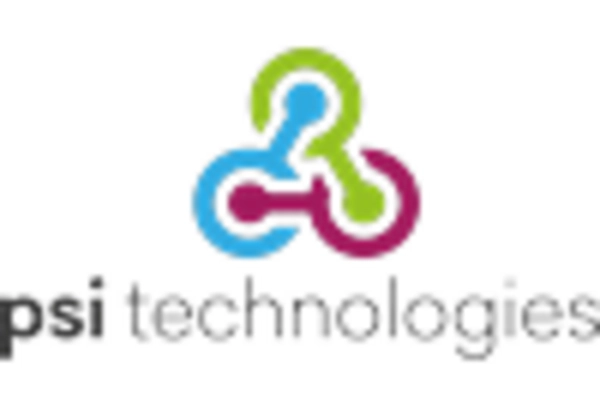Advancements in Photonic Devices
The Porous Silicon Substrate Market is significantly influenced by advancements in photonic devices, which are essential for modern communication technologies. The unique optical properties of porous silicon make it an attractive choice for applications in light-emitting diodes (LEDs), lasers, and sensors. As the demand for faster and more efficient communication systems escalates, the integration of porous silicon substrates in photonic devices is expected to increase. Market analysis suggests that the photonics sector is anticipated to grow at a compound annual growth rate (CAGR) of over 10% in the coming years. This growth is likely to propel the porous silicon substrate market, as manufacturers seek innovative solutions to enhance device performance and reduce energy consumption.
Innovations in Biomedical Engineering
The Porous Silicon Substrate Market is witnessing a transformative phase driven by innovations in biomedical engineering. Porous silicon substrates are increasingly being explored for their potential in drug delivery systems, biosensors, and tissue engineering. Their biocompatibility and tunable porosity make them ideal candidates for various medical applications. Recent studies have highlighted the effectiveness of porous silicon in targeted drug delivery, which could revolutionize treatment methodologies. The biomedical market is projected to reach USD 600 billion by 2025, indicating a substantial opportunity for porous silicon substrates to penetrate this lucrative sector. As research continues to unveil new applications, the market for porous silicon substrates in biomedical engineering is likely to expand significantly.
Emerging Applications in Energy Storage
The Porous Silicon Substrate Market is poised for growth due to emerging applications in energy storage technologies. With the increasing demand for efficient energy solutions, porous silicon substrates are being investigated for their potential use in lithium-ion batteries and supercapacitors. Their high surface area and porosity can enhance the performance of energy storage devices, leading to faster charging times and improved energy density. The energy storage market is projected to reach USD 200 billion by 2026, suggesting a significant opportunity for porous silicon substrates to contribute to advancements in this field. As the world transitions towards renewable energy sources, the role of porous silicon in energy storage applications is likely to become increasingly vital.
Rising Demand in Semiconductor Applications
The Porous Silicon Substrate Market is experiencing a notable surge in demand due to its critical role in semiconductor applications. As the electronics sector continues to expand, the need for advanced materials that enhance performance and efficiency becomes paramount. Porous silicon substrates are increasingly utilized in the fabrication of microelectronic devices, where their unique properties facilitate improved thermal management and electrical performance. Recent data indicates that the semiconductor market is projected to reach USD 1 trillion by 2030, suggesting a robust growth trajectory that will likely benefit the porous silicon substrate segment. This trend underscores the importance of porous silicon in meeting the evolving requirements of high-performance electronics, thereby driving the market forward.
Sustainability and Eco-Friendly Manufacturing
The Porous Silicon Substrate Market is increasingly aligned with sustainability trends, as manufacturers seek eco-friendly solutions in production processes. The shift towards sustainable materials is driven by regulatory pressures and consumer preferences for environmentally responsible products. Porous silicon, being derived from silicon, offers a lower environmental impact compared to traditional substrates. Furthermore, the ability to recycle porous silicon substrates enhances their appeal in a market that is progressively prioritizing sustainability. As industries strive to reduce their carbon footprint, the adoption of porous silicon substrates is expected to rise, potentially leading to a market growth rate of 8% annually. This trend reflects a broader commitment to sustainable practices across various sectors.














Leave a Comment